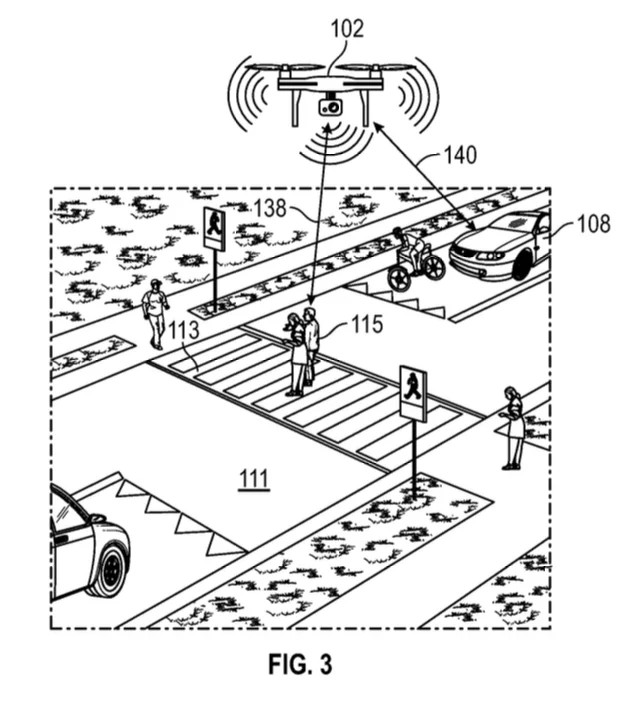
A US patent filing by Ford Motor Co. published this month provides details on a system the automotive giant is developing to permit secure drone flights over public roads.
Ford filed its “Systems and Methods For Operating Drone Flights Over Public Roadways” patent application in June of last year, and sharp-eyed specialist site Ford Authority just reported its publication by authorities in mid-December. As always in such documents, the request is fairly wonk-heavy in details describing Ford’s system to permit a drone to safely operate over public roads – and therefore ground vehicles and people – using continual communications tech that would allow it to detect looming danger and get clear of objects below.
Read: Ford plans last-mile delivery drones docking in cargo trucks
The Ford patent application calls for using a communication system between drones deployed over roadways and various ground objects (including vehicles) to inform that latter about the craft’s presence and trajectory. Meanwhile, in the event of changing factors that increase the risk of the UAV’s crash – whether those involve a failing battery, worsening weather conditions, or other sudden complications – ground position data will allow it to avoid objects below.

The patent filing from June 2020 describes it working the following way.
“An example method includes transmitting, by a first drone, a drone safety message, the drone safety message being received by a vehicle or a roadside infrastructure device located along a first planned flight path, determining an emergency condition for the first done, transmitting a warning message over a vehicle-to-everything communication that indicates that the first drone is experiencing the emergency condition,” it says in a marathon of a sentence. “A connected vehicle or mobile device receives the warning message over the vehicle-to-everything communication. Determining drone operating evidence as the first drone traverses along the first planned flight path, and storing the drone operating evidence in a distributed ledger.”
In other (shorter) words, Ford’s system would have drones operating over roads continually communicating with fixed or vehicle-based sensors on the ground to maintain constant and evolving situational awareness. At the first sign of potential trouble, the UAV uses those feeds to remove itself to an area determined to be free of anything that might be injured or damaged by a crash landing.

Read more: Renault’s new delivery solution combines electric van, bike, and drone
As Ford Authority notes, the patent is hardly the first by Ford for making drone operation compatible with the vehicles it produces – especially those operated by delivery businesses. The company – which began using UAVs in various roles in its Valencia, Spain car factory – is similarly looking at ways to pair aerial craft with trucks, cars, and vans.
Last August, DroneDJ reported a filing by Ford that shows its concept for using its cargo trucks as an operational platform or hub for several drones performing last-mile deliveries to surrounding destinations. The automotive maker has also filed patents for different sorts of UAV-ground vehicle interaction, including nests built into cars for storage and later deployment for purposes like tracking autos, locating lost vehicles, and even jump-starting those whose batteries have gone flat.
FTC: We use income earning auto affiliate links. More.



Comments